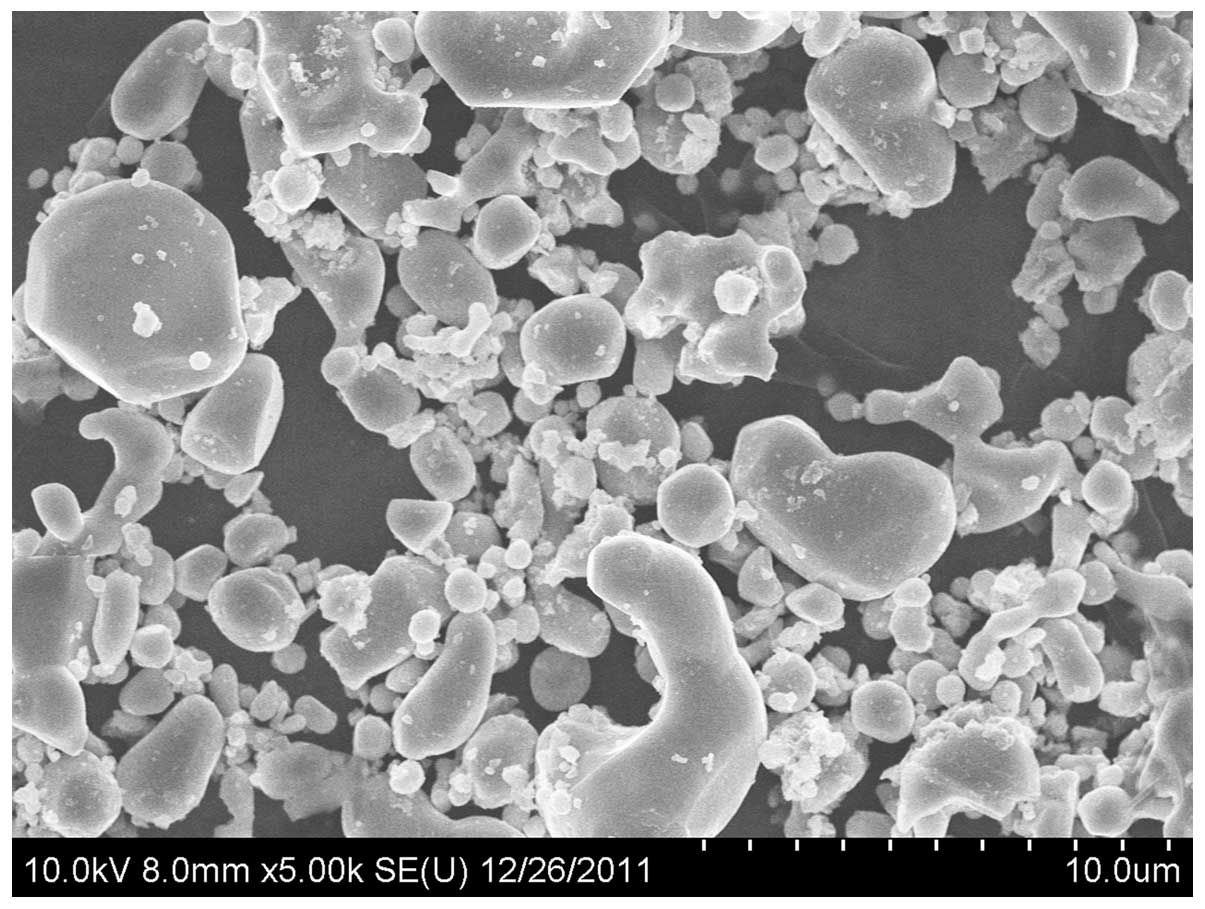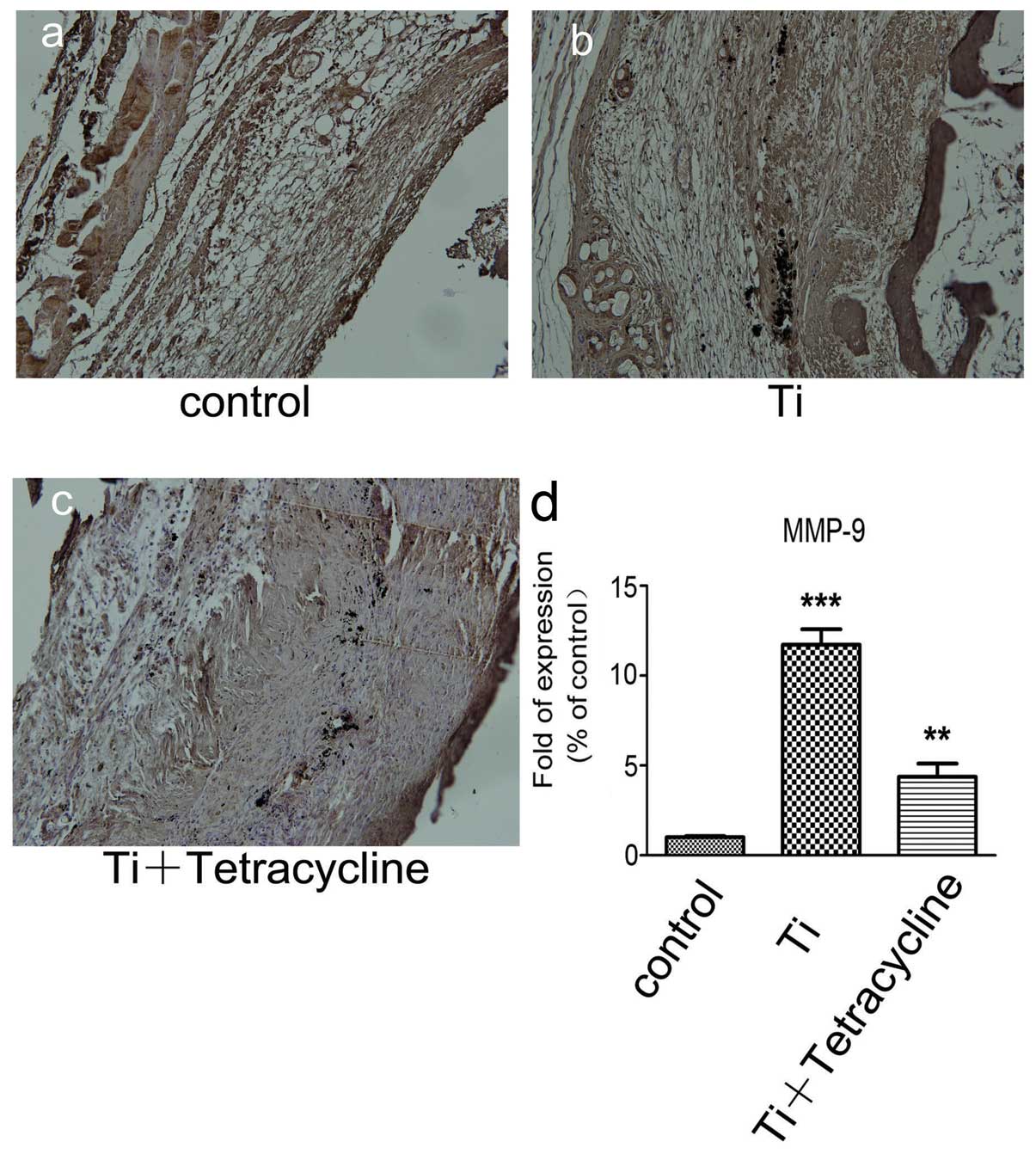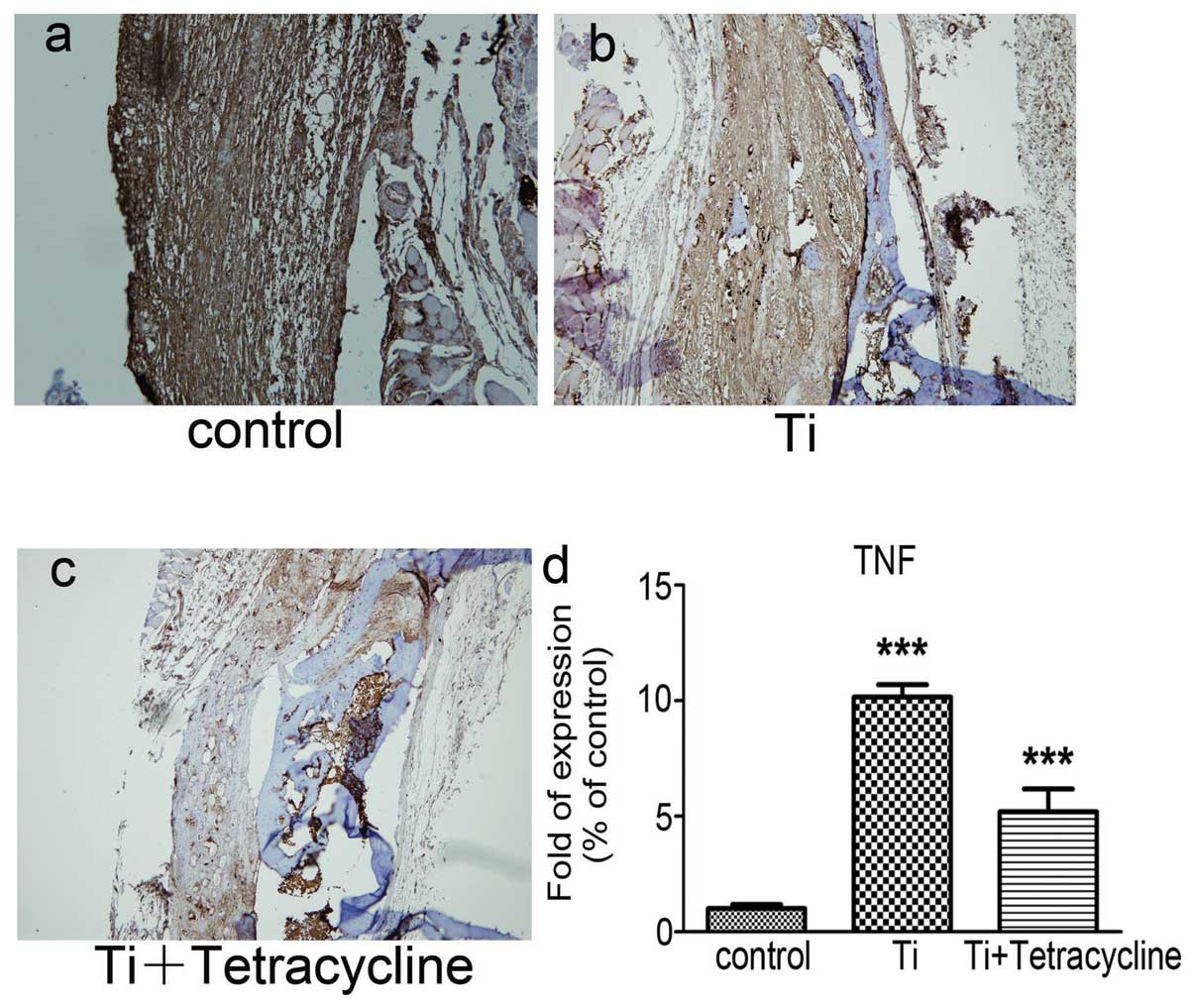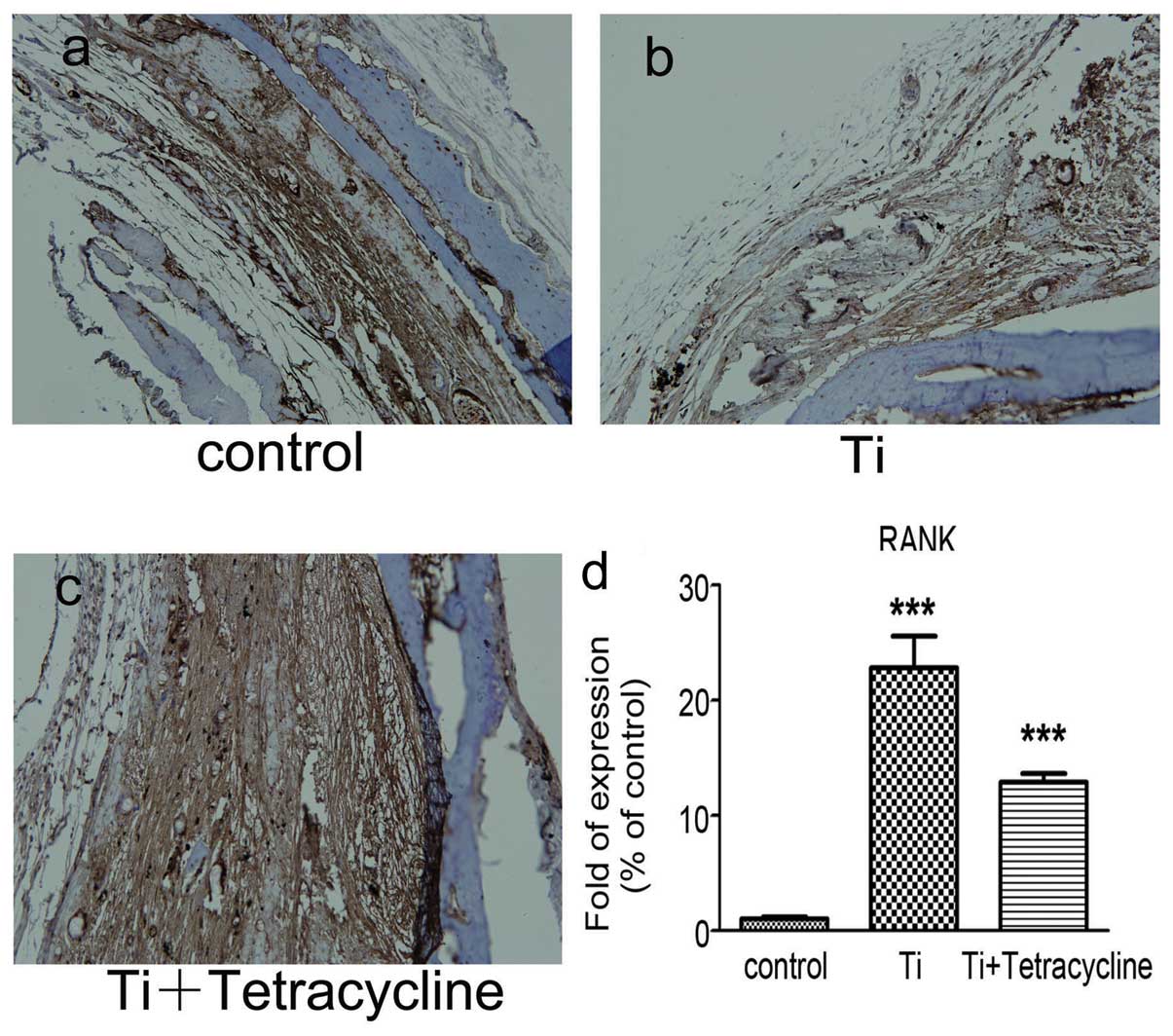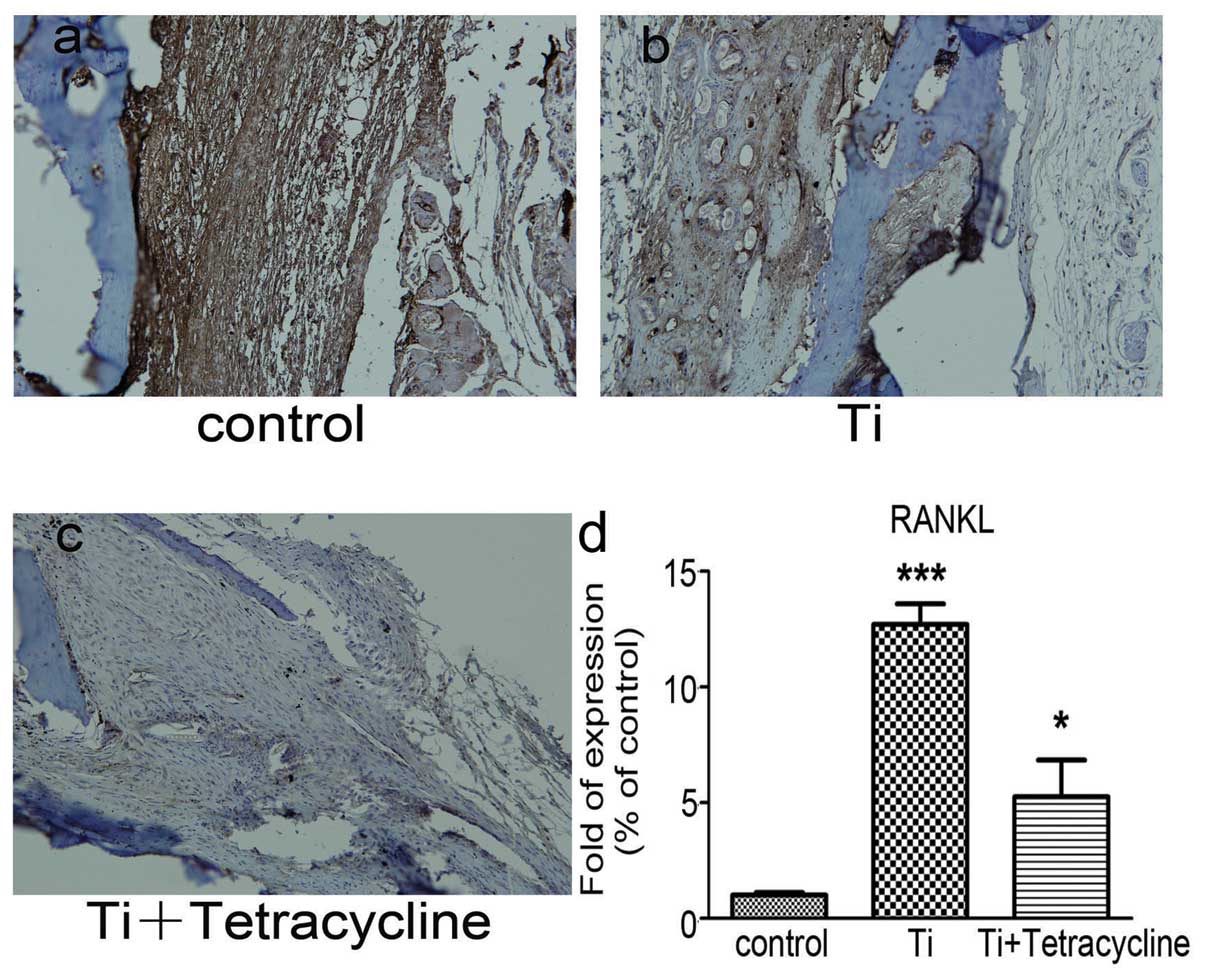|
1.
|
SM HorowitzSB DotyJM LaneAH
BursteinStudies of the mechanism by which the mechanical failure of
polymethylmethacrylate leads to bone resorptionJ Bone Joint Surg
Am7580281319938314821
|
|
2.
|
WH HarrisWear and periprosthetic
osteolysis: the problemClin Orthop Relat
Res6670200110.1097/00003086-200112000-00007
|
|
3.
|
E InghamJ FisherThe role of macrophages in
osteolysis of total joint
replacementBiomaterials2612711286200510.1016/j.biomaterials.2004.04.03515475057
|
|
4.
|
G HoltC MurnaghanJ ReillyRM MeekThe
biology of aseptic osteolysisClin Orthop Relat
Res460240252200717620815
|
|
5.
|
F von KnochC WedemeyerA HeckeleiPromotion
of bone formation by simvastatin in polyethylene particle-induced
osteolysisBiomaterials2657835789200515869791
|
|
6.
|
X PengK TaoT ChengJ ZhuX ZhangEfficient
inhibition of wear debris-induced inflammation by locally delivered
siRNABiochem Biophys Res
Commun377532537200810.1016/j.bbrc.2008.10.02618930023
|
|
7.
|
M TakagiYT KonttinenS
SantavirtaExtracellular matrix metalloproteinases around loose
total hip prosthesesActa Orthop
Scand65281286199410.3109/174536794089954548042479
|
|
8.
|
B NawrockiM PoletteH BurletP BirembautJJ
AdnetExpression of gelatinase A and its activator MT1-MMP in the
inflammatory periprosthetic response to polyethyleneJ Bone Miner
Res14288294199910.1359/jbmr.1999.14.2.2889933484
|
|
9.
|
I TakeiM TakagiS SantavirtaMatrix
metalloproteinases and tissue inhibitors of metalloproteinases in
joint fluid of the patients with loose artificial hip jointsJ
Biomed Mater
Res45175183199910.1002/(SICI)1097-4636(19990605)45:3%3C175::AID-JBM3%3E3.0.CO;2-910397973
|
|
10.
|
S WagnerH GollwitzerD WernickeR LangerKA
SiebenrockW HofstetterInterface membrane fibroblasts around
aseptically loosened endoprostheses express MMP-13J Orthop
Res26143152200810.1002/jor.2049417853491
|
|
11.
|
P ReponenC SahlbergC MunautI ThesleffK
TryggvasonHigh expression of 92-kD type IV collagenase (gelatinase
B) in the osteoclast lineage during mouse developmentJ Cell
Biol12410911102199410.1083/jcb.124.6.10918132709
|
|
12.
|
CH TsaiYJ ChenFM HuangYF SuYC ChangThe
upregulation of matrix metalloproteinase-9 in inflamed human dental
pulpsJ
Endod31860862200510.1097/01.don.0000164851.55389.4e16306818
|
|
13.
|
AL WucherpfennigYP LiWG
Stetler-StevensonAE RosenbergP StashenkoExpression of 92 kD type IV
collagenase/gelatinase B in human osteoclastsJ Bone Miner
Res9549556199410.1002/jbmr.56500904158030443
|
|
14.
|
PT De JongW TigchelaarCJ Van NoordenHM Van
der VisPolyethylene wear particles do not induce inflammation or
gelatinase (MMP-2 and MMP-9) activity in fibrous tissue interfaces
of loosening total hip arthroplastiesActa
Histochem113556563201120656340
|
|
15.
|
C ZhangTT TangWP RenXL ZhangKR
DaiInhibiting wear particle-induced osteolysis with doxycyclineActa
Pharmacol
Sin2816031610200710.1111/j.1745-7254.2007.00638.x17883947
|
|
16.
|
Y GuHM LeeT SorsaSR SimonLM
GolubDoxycycline inhibits mononuclear cell-mediated connective
tissue breakdownFEMS Immunol Med
Microbiol58218225201010.1111/j.1574-695X.2009.00625.x19909341
|
|
17.
|
D GengY XuH YangProtection against
titanium particle induced osteolysis by cannabinoid receptor 2
selective
antagonistBiomaterials3119962000201010.1016/j.biomaterials.2009.11.06920004468
|
|
18.
|
CA HoldingDM FindlayR StamenkovThe
correlation of RANK, RANKL and TNFalpha expression with bone loss
volume and polyethylene wear debris around hip
implantsBiomaterials2752125219200616806459
|
|
19.
|
C WedemeyerC NeuerburgA
PfeifferPolyethylene particle-induced bone resorption in
alpha-calcitonin gene-related peptide-deficient miceJ Bone Miner
Res2210111019200710.1359/jbmr.07040817419680
|
|
20.
|
SY YangB WuL MaytonProtective effects of
IL-1Ra or vIL-10 gene transfer on a murine model of wear
debris-induced osteolysisGene
Ther11483491200410.1038/sj.gt.330219214724688
|
|
21.
|
W RenSY YangPH WooleyA novel murine model
of orthopaedic wear-debris associated osteolysisScand J
Rheumatol33349357200410.1080/0300974041000594415513686
|
|
22.
|
X MaoX PanS ZhaoX PengT ChengX
ZhangProtection against titanium particle-induced inflammatory
osteolysis by the proteasome inhibitor bortezomib in
vivoInflammation3513781391201210.1007/s10753-012-9451-822391745
|
|
23.
|
PH WooleyR MorrenJ AndaryInflammatory
responses to orthopaedic biomaterials in the murine air
pouchBiomaterials23517526200210.1016/S0142-9612(01)00134-X11761173
|
|
24.
|
JD SamsJC MilbrandtJM FroelichAD
RainvilleDG AllanHospital outcome after emergent vs elective
revision total hip arthroplastyJ
Arthroplasty25826828201010.1016/j.arth.2010.01.09720378305
|
|
25.
|
NJ EpsteinBA WarmeJ SpanogleInterleukin-1
modulates periprosthetic tissue formation in an intramedullary
model of particle-induced inflammationJ Orthop
Res23501510200510.1016/j.orthres.2004.10.00415885468
|
|
26.
|
J WaddellKP PritzkerEL BoyntonIncreased
cytokine secretion in patients with failed implants compared with
patients with primary implantsClin Orthop Relat
Res434170176200510.1097/01.blo.0000155079.29604.d415864048
|
|
27.
|
RM AtkinsVG LangkamerMJ PerryCJ ElsonCM
CollinsBone-membrane interface in aseptic loosening of total joint
arthroplastiesJ
Arthroplasty12461464199710.1016/S0883-5403(97)90203-59195323
|
|
28.
|
SB GoodmanP HuieY SongCellular profile and
cytokine production at prosthetic interfaces. Study of tissues
retrieved from revised hip and knee replacementsJ Bone Joint Surg
Br80531539199810.1302/0301-620X.80B3.81589619952
|
|
29.
|
SR GoldringAL SchillerM RoelkeCM RourkeDA
O’NeilWH HarrisThe synovial-like membrane at the bone-cement
interface in loose total hip replacements and its proposed role in
bone lysisJ Bone Joint Surg Am6557558419836304106
|
|
30.
|
KJ KimHE RubashSC WilsonJA D’AntonioEJ
McClainA histologic and biochemical comparison of the interface
tissues in cementless and cemented hip prosthesesClin Orthop Relat
Res28714215219938448933
|
|
31.
|
GF MaA AliN VerzijlIncreased collagen
degradation around loosened total hip replacement implantsArthritis
Rheum5429282933200610.1002/art.2206416948130
|
|
32.
|
Y YokohamaT MatsumotoM HirakawaProduction
of matrix metalloproteinases at the bone-implant interface in loose
total hip replacementsLab Invest7389991119958558853
|
|
33.
|
F VelardD Laurent-MaquinJ BrauxThe effect
of zinc on hydroxyapatite-mediated activation of human
polymorphonuclear neutrophils and bone implant-associated acute
inflammationBiomaterials3120012009201010.1016/j.biomaterials.2009.11.066
|
|
34.
|
M TakagiY TamakiH HasegawaToll-like
receptors in the interface membrane around loosening total hip
replacement implantsJ Biomed Mater Res
A8110171026200710.1002/jbm.a.3123517415764
|
|
35.
|
P LaquerriereA Grandjean-LaquerriereS
Addadi-RebbahMMP-2, MMP-9 and their inhibitors TIMP-2 and TIMP-1
production by human monocytes in vitro in the presence of different
forms of hydroxyapatite
particlesBiomaterials2525152524200410.1016/j.biomaterials.2003.09.03414751736
|
|
36.
|
N TakiJM TatroR LoweVM GoldbergEM
GreenfieldComparison of the roles of IL-1, IL-6, and TNFalpha in
cell culture and murine models of aseptic
looseningBone4012761283200710.1016/j.bone.2006.12.05317236833
|
|
37.
|
TJ FedericiThe non-antibiotic properties
of tetracyclines: clinical potential in ophthalmic diseasePharmacol
Res64614623201110.1016/j.phrs.2011.06.01321843641
|
|
38.
|
AC LauTT DuongS ItoGJ WilsonRS
YeungInhibition of matrix metalloproteinase-9 activity improves
coronary outcome in an animal model of Kawasaki diseaseClin Exp
Immunol157300309200910.1111/j.1365-2249.2009.03949.x19604270
|
|
39.
|
S SamtaniJ AmaralMM CamposRN FarissSP
BecerraDoxycycline-mediated inhibition of choroidal
neovascularizationInvest Ophthalmol Vis
Sci5050985106200910.1167/iovs.08-317419516001
|
|
40.
|
WP RenDC MarkelR ZhangAssociation between
UHMWPE particle-induced inflammatory osteoclastogenesis and
expression of RANKL, VEGF, and Flt-1 in
vivoBiomaterials2751615169200610.1016/j.biomaterials.2006.04.00416814378
|
|
41.
|
JJ HyunHJ ChunB KeumEffect of omeprazole
on the expression of transcription factors in osteoclasts and
osteoblastsInt J Mol Med26877883201021042782
|
|
42.
|
W SriarjK AokiK OhyaY TakagiH
ShimokawaBovine dentine organic matrix down-regulates osteoclast
activityJ Bone Miner
Metab27315323200910.1007/s00774-009-0063-919296049
|
|
43.
|
SK TatJP PelletierF MineauJ CaronJ
Martel-PelletierStrontium ranelate inhibits key factors affecting
bone remodeling in human osteoarthritic subchondral bone
osteoblastsBone49559567201110.1016/j.bone.2011.06.00521700005
|
|
44.
|
MG ChoiHS KohD KluessEffects of titanium
particle size on osteoblast functions in vitro and in vivoProc Natl
Acad Sci USA10245784583200510.1073/pnas.050069310215755807
|
|
45.
|
S JuradoN Garcia-GiraltA Diez-PerezEffect
of IL-1beta, PGE(2), and TGF-beta1 on the expression of OPG and
RANKL in normal and osteoporotic primary human osteoblastsJ Cell
Biochem110304310201020225238
|
|
46.
|
K SundaramR NishimuraJ SennRF YoussefSD
LondonSV ReddyRANK ligand signaling modulates the matrix
metalloproteinase-9 gene expression during osteoclast
differentiationExp Cell
Res313168178200710.1016/j.yexcr.2006.10.00117084841
|
|
47.
|
X MaoX PanT ChengX ZhangTherapeutic
potential of the proteasome inhibitor bortezomib on titanium
particle-induced inflammation in a murine
modelInflammation35905912201210.1007/s10753-011-9392-721965047
|















